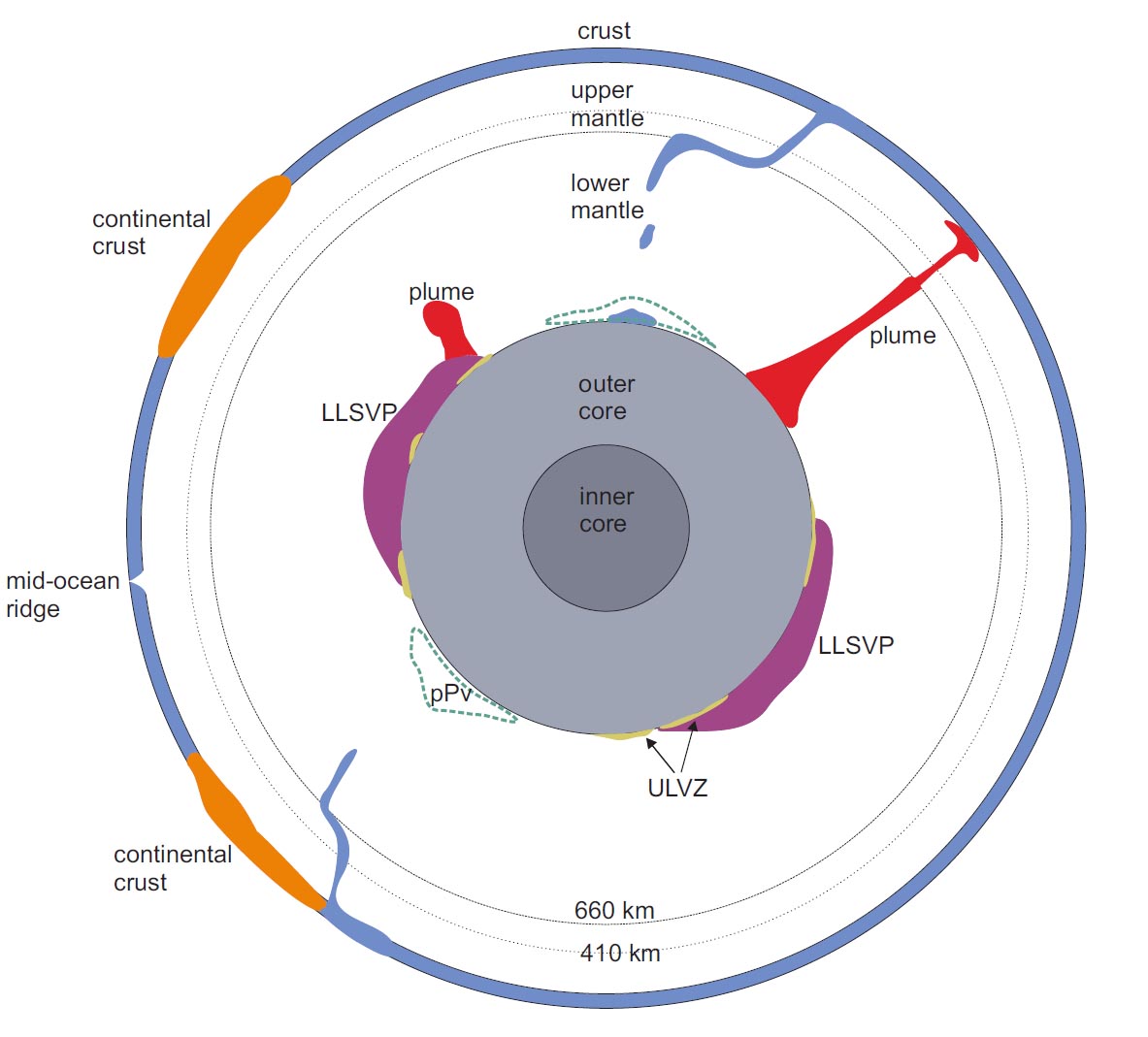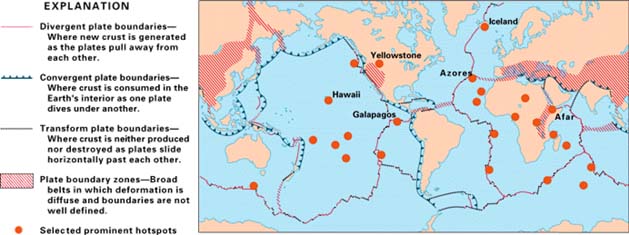Planet interior components
Figure 1: Structure of the Earth's Interior

The structure of the Earth’s upper mantle can be derived from seismic waves. The main layers are the crust, the mantle and the core.
Ridge
A ridge is a region where two plates are diverging (moving away from each other), and new hot mantle material is rising to fill the space created between the plate. This usually ridge occurring in the ocean, is referred to as a mid- ocean ridge. A mid-ocean ridge is an underwater mountain chain with the rift (from separating plates) at the top/center of the mountain chain. The mid-ocean ridges are connecting forming a single ridge system and creating the longest mountain chain in the world. Examples of ridges on the Earth, with passive upwelling of mantle mate- rial can be seen in Figure 5
Plume
Hot, less dense material rising in the mantle in a tubular fashion is referred to as a plume. Plumes are located all over the mantle and help bring material from the deep Earth up to the surface. Plumes can be created anywhere there is an instability in the boundary layer. At the core-mantle-boundary (CMB), plumes can be created, bringing hot less dense material up to the 660km boundary (where a phase change occurs) or sometimes to the surface. Examples of plumes in the mantle can be seen in the above Figure 1.
A hot spot is an area on Earth where a plume has existed for a long time, even while the plate moves over top. The Hawaii volcano chain is an example of this. As the plate moved over the hot spot plume, new volcanoes were created in a chain, with the oldest being furthest from the current active volcano. Figure 2 shows the location of hot spots all over the world.

